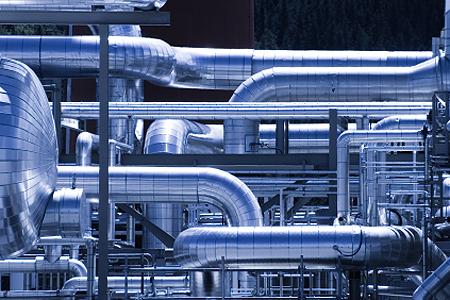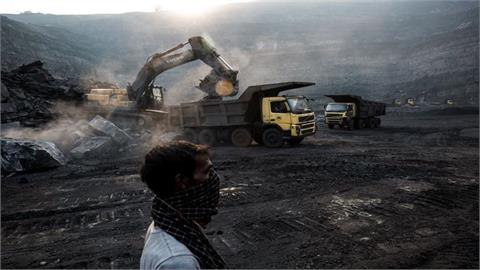Last week, the natural gas industry met in Paris for the 26th World Gas Conference. It was an exciting event that drew people from every corner of the world and every part of the gas value chain. Yet it was also an event full of anxiety—it did not feel like the "golden age of gas.” It felt more like a midlife crisis.
Of course, natural gas has had a fantastic run over the past 40 years. No other fuel has gained more market share in the global energy mix, and in a carbon-constrained world, gas has branded itself as part of the solution, either as a "transition” or as a "destination” fuel. Investments worth hundreds of billions of dollars are underway to bring new gas to an increasingly global market. Moreover, gas is finally making inroads into the transportation sector, where oil has been dominant for so long. Statements that "gas will be the fuel of the 21st century” are now pretty common.
Why the midlife crisis, then? In my view, it comes down to Europe, where demand is down 23% relative to 2010 and where the market has shrunk to the same size as it was in the mid 1990s. Gas is being squeezed by renewables on one side and by coal on the other (other factors have played a role as well, of course). Sure, the gas industry brushes off renewables as "subsidized” and "uneconomic,” but renewables are still growing and their costs are still falling. And renewables are displacing gas, despite the often-repeated maxim that gas should complement the intermittency of renewables. Meanwhile, coal is having a mini-renaissance, proving that the death of coal has been, once again, greatly exaggerated.
The anxiety I detected was this: what if the rest of the world starts to look like Europe? What if countries find that coal and renewables (and nuclear) offer a better path forward than natural gas? What future does gas have then? Can gas compete?
This was, in my mind, the context for the plea for stronger carbon restrictions—this was gas’ effort to up the ante on coal, regain the high ground and solicit policy support to compete. Of course, there is an irony in all this: the only place where gas beats coal in open, competitive markets is in the United States which has no carbon restrictions in place. Don’t get me wrong: appropriately pricing the externalities in energy is extremely important. But it is hard not to be a little cynical when seeing coal helping to eviscerate the market for gas in Europe.
And so, despite the overall excitement about the future, there was an overarching concern about demand. To be fair, whenever the market pendulum swings towards oversupply, the concern shifts from supply towards demand. The slowdown in China, the prospect for nuclear energy, the gains made in efficiency—all these matter a great deal and fuel skepticism about the prospects for gas, especially at a time of deeper structural change in the basic building blocks of the gas industry.
But the sentiment at WGC was more than a cyclical concern about demand; it was a profound challenge to a fuel whose motto has been "abundant, scalable and clean,” and whose strategy, as a fuel, has rested on ensuring that everyone knows that gas is "abundant, scalable and clean.” Yes, everyone now knows—but that’s not enough. It is not enough in a world which sees renewables are the only true low-carbon option and where the costs of generation for wind and solar are falling sharply. It is not enough in a world where new technologies and new systems are reshaping how energy is produced, transported and consumed. It is not enough in a world where coal continues to have enormous political power and economic appeal (despite its health and environmental consequences). And it is not enough in a world that remains enamored by the promises of nuclear energy.
In short, there is no reason why gas has to be the fuel of the 21st century. For the longest time, the gas industry has focused on advocacy and public relations—but advocacy is not enough and neither is a push for stricter carbon emissions. Europe shows that even in a carbon-constrained marketplace, gas is not sure to have a bright future. For a while, the industry has been able to brush off the European experience as an exception—the carbon pricing system is broken and renewables are overly subsidized, it would say (both true). But the gas market is still vanishing, a reminder that public policy can play as important a role as economics in shaping the energy mix.
Gas has a political economy problem: outside the United States, the gas industry has no strong domestic constituency that will fight for its future—or, put differently, gas has far less homegrown political power than other fuels. In part this is due to limited domestic production (and hence employment) in the major consuming areas and in part it is due to branding—gas having never succeeded in shedding oil from its name ("oil an gas”), and oil is still reviled by the public. The bottom line is that among the consumers, gas is seen as a liability—a political liability in Europe, an economic liability in developed Asia. As one participant told me, "no politician wants to be associated with this industry.” (The clearest data point for that statement, by the way, was that French President François Hollande was supposed to address the opening ceremony but did not—nor did he send anyone in his place.)
Of course, gas is not going anywhere. There is still too much oil and coal demand that gas will displace, and the resource underground is plentiful and will be developed further. In emerging Asia, it is hard to see how gas will *not* grow, as large economies limit the environmental, health and social fall-out of coal-heavy economic development. But as a "bridge” or "transition” fuel, its lifespan need not be long: Europe has shown us as much, and the bridge is getting shorter as new technologies mature and spread around the world. It was this realization, more than anything else, that I detected at the World Gas Conference, and why I think that gas is headed for a broader rethink to find a more secure place in the global energy mix.
*President & Chief Analyst at enalytica
(www.eiranews.com, June 7, 2015)




